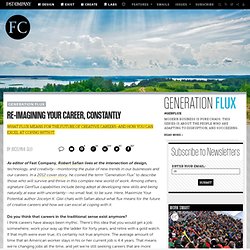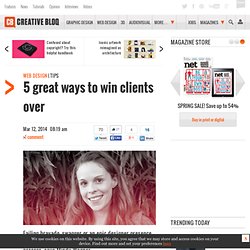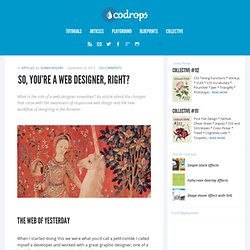

Re-Imagining Your Career, Constantly. As editor of Fast Company, Robert Safian lives at the intersection of design, technology, and creativity--monitoring the pulse of new trends in our businesses and our careers.

In a 2012 cover story, he coined the term “Generation Flux” to describe those who will survive and thrive in this complex new world of work. Among others, signature GenFlux capabilities include being adept at developing new skills and being naturally at ease with uncertainty--no small feat, to be sure. Here, Maximize Your Potential author Jocelyn K. Glei chats with Safian about what flux means for the future of creative careers and how we can excel at coping with it. Do you think that careers in the traditional sense exist anymore? What kinds of skills should people be cultivating? And it is also what gives you the most options moving forward.
How does that mind-set play out in practice? If you don’t have one place where you really have a passion to go deep, then dig into all the areas in which you’re interested. Device-Agnostic. The more I build for the web, the more the term ‘device-agnostic’ endears itself to me.

I used to think it merely dealt with basing responsive breakpoints on content rather than particular devices, but there’s more to devices than the size of their screens. A device-agnostic approach also takes into account infinite combinations of screen resolution, input method, browser capability, and connection speed.
With such a wide range of possibilities, the sensible thing to do is to zero in on the harshest conditions (or toughest things to deliver) and build from there. Like cars designed to perform in extreme heat or on icy roads, websites should be built to face the reality of the web’s inherent variability. In my mind this approach addresses the following from the beginning: Hostile browsersTiny screensSlow connection speedsTouch inputs Let me break these down. Hostile Browsers Trying to make websites look the same in every browser can be expensive and unrealistic.
The Message is Medium Rare. 5 great ways to win clients over. In truth, I'm no George Lois.

I don't have bravado, or swagger, or whatever it is that allows some designers to walk into a room with a steely-eyed stare and sell their work with only their epic presence. Nope. I'm a little less intimidating. A little more flexible. And for years, much less likely to get my designs through the client feedback loop unscathed. I didn't show the kind of confidence needed to make people believe in my solutions. It took time and experience for me to learn two things. Soft sell The myth that all designers are uncompromising egoists is hard to avoid.
Selling your work starts long before your first design deliverable. Here are a few of my favourite tricks for winning clients over without bluster. 01. Get to know the project, the team, and the client's goals. 02. Clients are not all alike; each comes to the project with a particular view or lens on the work you'll be doing. 03. 04. 05. So don't worry if you can't pull off 'badass ninja rockstar guru'.
My top 7 secrets on how I run my (super-successful) design business.
So, You're a Web Designer, Right? What is the role of a web designer nowadays?

An article about the changes that came with the awareness of responsive web design and the new workflow of designing in the browser. The Web of yesterday When I started doing this we were what you’d call a petit-comitè. I called myself a developer and worked with a great graphic designer, one of a kind. Our roles were crystal clear back then. Seasons came, seasons went and we started getting deeper and deeper into it. My journey into design started with typography, perhaps the only field where my man Felipe was not stunningly fluid. The Web, today Andy Rutledge is bolder than me when he says: ‘A designer who does not write markup and css is not designing for the web, but drawing pictures’. ‘Most people make the mistake of thinking design is what it looks like. It’s been about three years now since the Mobile-First/Responsive meteorite shook the Web community.
‘Web Design is Product Design’ – Andy Rutledge So who killed the product designer? Yeah.